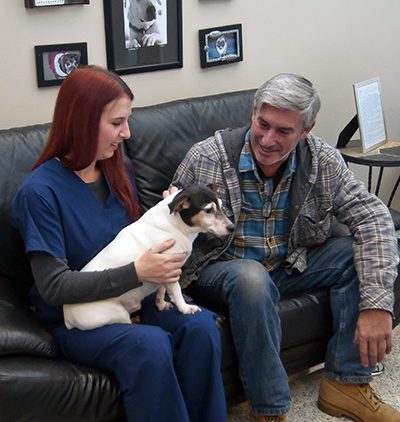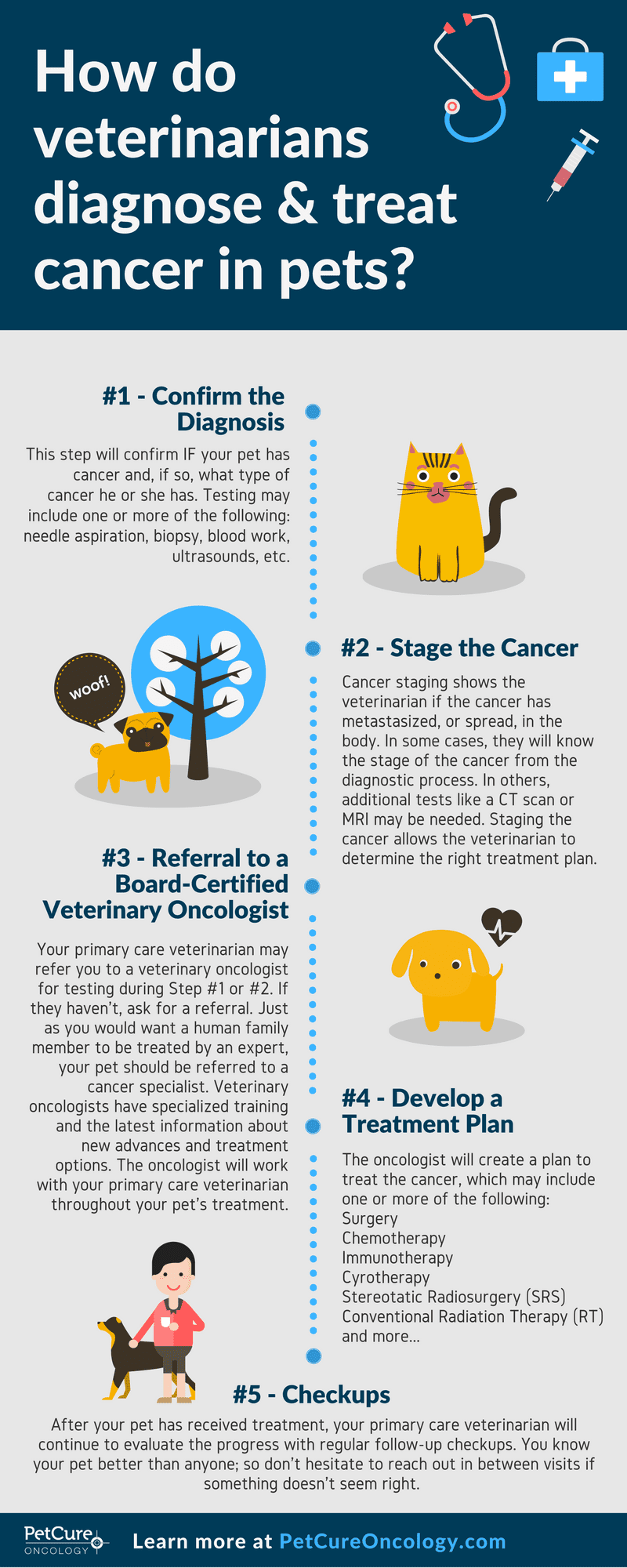Pet Cancer Diagnosis: What to Expect

In a previous pet cancer blog post, we discussed early warning signs of cancer to look for in your pet. So what happens when you notice one of those symptoms? The first step is to not hesitate or “wait it out.” If you notice anything irregular about your pet (physically, emotionally, or behaviorally), take them to your veterinarian. Not every sign of cancer manifests itself in an obvious way. This is also why we cannot stress enough the importance of doing annual wellness checkups for your pet (twice a year for older pets).
Our PetCure Oncology team members have met with hundreds of scared and worried pet owners. Receiving a cancer diagnosis is a confusing and overwhelming time. To help you understand what is involved in the diagnosing and staging process, we’ve put together a road map of what to expect:
How do veterinarians diagnose and treat cancer in pets?
#1 – Confirm the Diagnosis
This step will confirm if your pet has cancer and, if so, what type of cancer he or she has. Testing may include one or more of the following: needle aspiration, biopsy, blood work, ultrasounds, etc.
#2 – Stage the Cancer
Cancer staging shows the veterinarian if the cancer has metastasized, or spread, in the body. In some cases, they will know the stage of the cancer from the diagnostic process. In others, additional tests like a CT scan or MRI may be needed. Staging the cancer allows the veterinarian to determine the right treatment plan.
#3 – Referral to a Board-Certified Veterinary Oncologist
Your primary care veterinarian may have referred you to a veterinary oncologist for testing during Step #1 or #2. If they haven’t, ask for a referral. Just as you would want a human family member to be treated by an expert, your pet should be referred to a cancer specialist. Veterinary oncologists have specialized training and the latest information about new advances and treatment options. The oncologist will work with your primary care veterinarian throughout your pet’s treatment.
#4 – Develop a Treatment Plan
The oncologist will create a plan to treat the cancer, which may include the following, either alone or in combination:
- Surgery
- Chemotherapy
- Immunotherapy
- Cryotherapy
- Stereotactic Radiosurgery (SRS)
- Conventional Radiation Therapy (RT)
- and more…
To learn more about any of these treatment options, please visit our treatment options page.
#5 – Checkups
After your pet has received treatment, your primary care veterinarian will continue to evaluate the progress with regular follow-up checkups. You know your pet better than anyone; so don’t hesitate to reach out in between visits if something doesn’t seem right.
Hope for pets with cancer
At PetCure Oncology, we are here to offer hope for pets with cancer. As medical advances and technology continue to redefine what is possible, we hope you find it reassuring to know that, in many cases, cancer is a treatable disease – and in an increasing number of cases, it is potentially even curable.
If you have a pet that has been diagnosed with cancer, contact a PetCure location near you to schedule a consultation.

